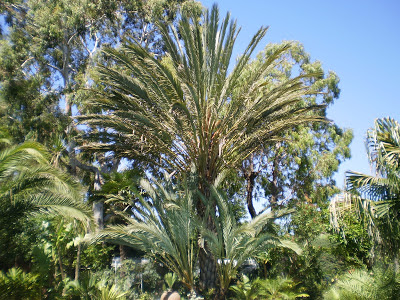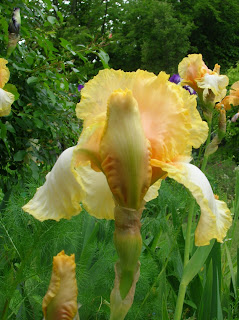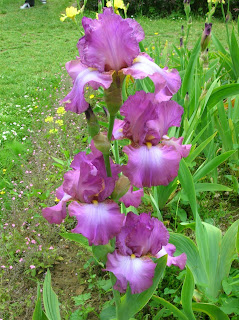At the request of several members we returned to Monsieur and Madame Navarro's incredible garden at La Garde, near Toulon. When the sliding gates open off the busy road you enter a very different world of exotic cactis and succulents.
This part of the garden is only 8 years old
These plants are intermingled around the well established garden which also contains the usual oleander, salvias, geraniums etc we see in most people's gardens in this part of the world.
Crinum
Artichoke
Convolvulus mauritanicus
Calliandra (Powder Puff Tree)
They have over 400 different varieties of agaves
Agave stricta
and over 2000 pots of the more tender plants dotted around the garden and several greenhouses filled with exotic succulents.
Hoodia bainii
Kalanchoe beharensis
The plant in the pot with the red flower is a Senecio stapeliformis, quite different from the common silverleaved, yellow flowering Senecio's
The pots are all taken inside in the autumn to protect them from frost. Watering takes several hours every day. The southern extremity of the garden has a huge bamboo hedge which creates an impenetrable barrier and a cool feeling. They originally started with three plants so beware!
Podophyllum kaleidoscope
This charming couple have devoted over 40 years creating a garden like no other in 6000 square meters. Originally a vineyard the land is bound on one side by a river and when that runs dry in May they turn to their well for watering and when that runs dry they have a green meter for watering the garden. Apparently everyone can apply to their Mairie for one of these meters and the water is cheaper. Three times a year they mulch the garden with several lorry loads of local chippings.
Trevisia palmata
We learned that succulents and cactis are part of the same family but not all cactis are succulents. The most tender plants are kept in a green house that is never allowed to fall below 14c.
Caudex collection, roots grow above the soil
Opuntia 'Santa Rita' cactus, the more sun it gets the redder the pads
After wandering round the garden we sat in the shade of a large mulberry tree and shared a delicious picnic lunch.
Afterwards Madame Navarro gave us coffee and homemade fig and apricot tartlets.
They also asked us to help ourselves to pots of succulents in their nursery.
They are such a charming and unassuming couple and their garden is testament to their passion.
Text: Michele Power
Photos: Gerda Nagtegaal; Marie-France Parks; Michele Power























































